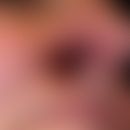DefinitionThis section has been translated automatically.
Very rare genetic disorder with a typical and complex pattern of congenital anomalies and developmental disorders. Cardio-facio-cutaneous syndrome belongs to the so-called RASopathies, which share many clinical features with the other syndromes of this group, especially Noonan syndrome and Costello syndrome (Pierpont ME et al. 2014).
Occurrence/EpidemiologyThis section has been translated automatically.
Worldwide, about 300 cases have been published so far. The prevalence in the Japanese population has been estimated at 1/810,000. However, it is believed that the prevalence is higher.
You might also be interested in
EtiopathogenesisThis section has been translated automatically.
CFC is genetically heterogeneous and is caused by gene mutations in the Ras/mitogen-activated protein kinase signaling pathway. It is due to mutations in one of 4 genes:
encoding proteins of the sarcoma/mitogen-activated protein kinase (RAS/MAPK) signaling pathway. This pathway is involved in the regulation of cell differentiation, proliferation, migration, and apoptosis (Allanson JE 2016).
All cases reported to date have been due to de novo mutations . Due to the sporadic nature of the disease, the sibling recurrence risk is very low.
ClinicThis section has been translated automatically.
- Characteristic craniofacial dysmorphology
- Congenital heart defects
- Skin lesions
- Sparse, thin, later curly hair
- Feeding and growth problems
- Growth retardation and intellectual disability.
- Seizures
- Visual disturbances
DiagnosticsThis section has been translated automatically.
Genetic test with detection of an alteration in one of the genes BRAF, MAP2K1 (MEK1), MAP2K2 (MEK2) or KRAS.
Differential diagnosisThis section has been translated automatically.
Differential diagnoses include Costello syndrome (CS) and Noonan syndrome, which have an overlapping phenotype with CFC syndrome. CFC syndrome, unlike CS, does not appear to have an increased risk of malignancy (Pierpont ME et al. 2014).
General therapyThis section has been translated automatically.
In the care of children with CFC syndrome must be involved representatives of various medical fields, as well as educators, psychologists and other professionals.
The basic pillars of treatment are professional therapy of physical complaints and intensive support.
LiteratureThis section has been translated automatically.
- Allanson JE (2016) Objective studies of the face of Noonan, Cardio-facio-cutaneous, and Costello syndromes: A comparison of three disorders of the Ras/MAPK signaling pathway. Am J Med Genet A 170:2570-2577.
- Pierpont ME et al (2014) Cardio-facio-cutaneous syndrome: clinical features, diagnosis, and management guidelines. Pediatrics 134:e1149-62.
- Haas K et al.(1994) The cardio-facio-cutaneous syndrome--Blick diagnosis of a rare syndrome. Clin Padiatr 206:181-183.
Disclaimer
Please ask your physician for a reliable diagnosis. This website is only meant as a reference.





